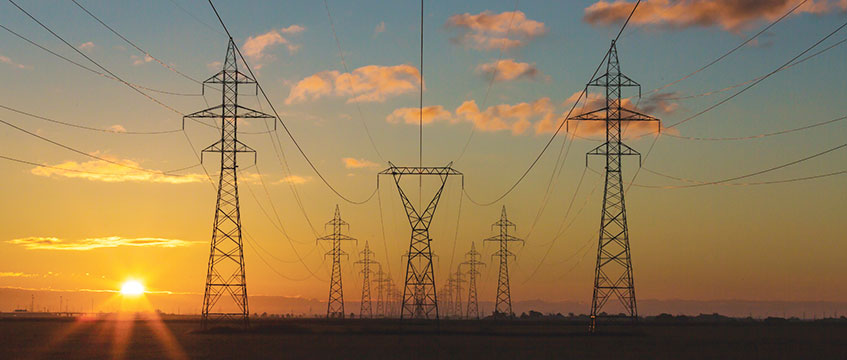The Energy Bill, first introduced into the House of Lords in July 2022, received royal assent on 26 October 2023, becoming the Energy Act 2023. It is a key step towards achieving the government’s goal of delivering on net zero policy objectives and strengthening the UK’s energy security.
The Act functions as enabling legislation to provide powers for government to implement future legislative changes, specifies how they will operate, and provides technical and commercial requirements and guidance for the newly regulated sectors. It also provides for Ofgem, currently the regulator for the gas and electricity sectors, to have an expanded net zero remit.
A number of consultations by the government and Ofgem are already planned over the course of the next year to draw out the technical and operational requirements (including any consumer protections and enforcement actions) for the new regulations that will follow from the powers granted under the Act. In this sense, the Act can be viewed as the first step on the journey, with the detail of future regulation and its impact on the market to follow in the coming years.
The Act covers a broad range of areas that will have an impact across the energy industry, but this article focuses on a number of the key areas particularly relevant for the property industry.
Heat regulations
The Act establishes a full regulatory framework for heat networks in what is the culmination of many years of progress towards regulation in the heating sector, with Ofgem appointed as the regulator with powers to regulate and govern heat networks (both “communal” networks in single buildings and “district” networks that connect multiple buildings).
While more detail is awaited on the exact form of the regulations, it is clear that: there will be new regulated activities for operating heat networks and supplying heat, with controls on pricing, technical and supply standards, and environmental impacts; a licensing regime covering the installation and maintenance of heat networks; and heat network zoning, with obligations on buildings to connect where located within a designated zone.
Concerns over consistency and transparency in service standards and pricing in the heat sectors have been evident for a number of years. The decision to formally regulate the heat sectors follows on from a Competition and Markets Authority report in 2018 (Heat Networks Market Study) and multiple consultations. Implementing formal regulation and the proposed zoning system can be expected to drive growth in the heating sector, in particular the development of large low-carbon heat network schemes with requirements on local developments and premises to connect.
Energy savings opportunity schemes
The Act further builds on the Energy Savings Opportunity Scheme Regulations 2014, which (broadly) require companies and non-public sector organisations employing at least 250 people or having a turnover of more than €50m (£44m)and balance sheet of €43m in the UK to carry out mandatory energy savings assessments.
The Act allows the secretary of state to impose new measures applicable to companies, partnerships and unincorporated associations requiring assessment and auditing of energy consumption to identify ways to reduce energy consumption and move towards net zero objectives. The Act sets out that future ESOS regulations may govern methodologies and responsible authorities for the purposes of assessing an organisation’s energy usage, carbon footprint and implementation of improvements, and set out specified actions that must be carried out to achieve required standards. This is anticipated to include: standards on required information, frequency and record-keeping for the purposes of assessments; and written action plans of proposed actions to achieve energy consumption reductions.
The enabling provisions are widely drafted and provide broad discretion for the secretary of state to impose requirements or confer responsibilities.
Energy smart appliances and load control
The Act allows the government to pass “energy smart regulations” intended to regulate the licensing, product and quality standards, and operation of “energy smart appliances”, meaning appliances capable of adjusting electricity input or output (of themselves or another appliance) in response to a load control signal. These explicitly include devices that can control refrigeration, heating, air conditioning/ventilation, energy storage systems, and electric vehicle charging points and stations.
Software is also explicitly covered, meaning that future regulations are likely to go beyond regulation of hardware to encompass load control functions and their integration within wider systems.
In this vein, the Act also enables Ofgem to create new licensable activities and amend existing licences for the purposes of facilitating and regulating load control activities.
The Act places certain requirements on any such regulations such that they must ensure security of electricity supply, support load control activities and protect end users’ data. The Act also enables the government to: set out guidelines and required standards for smart energy appliances; prohibit certain types of energy smart appliances from being sold; set out types of charging points, electrical heating appliances and heat pumps that are not compatible with other appliances; provide enforcement powers and remedies to correct non-compliance (which may include powers to inspect, test and seize energy smart appliances, and ultimately impose financial and criminal sanctions); and impose record-keeping, monitoring and compliance obligations.
Market reform, consumer protection and new energy efficiency obligations
The Act also provides for numerous other changes to electricity market arrangements which may have an impact on the property industry.
Some of these are overarching changes – for example, under the Act, Ofgem and the secretary of state’s principal objectives are tied to the government’s commitment to achieve net zero by 2050 by amending their respective remits under the Electricity Act 1989 and Gas Act 1986 so they are required to take into account the government’s legal commitment to net zero when carrying out their legislative functions.
Other measures are more specific, for example:
- The Act provides the secretary of state with the ability to make energy performance regulations that will apply to “new premises”, which includes premises that are being constructed or adapted. Such regulations may require assessment of energy usage or efficiency, require improvements to be identified and implemented, and potentially restrict or prohibit the marketing and disposal (including leasing) of premises which are non-compliant. They may also implement record-keeping obligations and regulate what fees can be charged in relation to compliance with the regulations. Future regulations have a broad potential effect, allowing government to determine which premises and persons fall within scope, and enabling the imposition of civil penalties or criminal offences.
- The Act enables the government to make regulations for “electricity support payments” to be paid to entities carrying out energy-intensive activity to alleviate electricity costs. Such future regulations will need to determine eligibility requirements and calculation methodology and provide for administration of the payments as well as enforcement functions. To cover the cost of any such payments, the government is given powers to issue a levy on electricity suppliers. The primary purpose is to provide measures to mitigate energy price shocks, and the ability for the government to support sectors much more rapidly.
However, it should be noted that a number of proposed amendments did not make it through to the final wording of the Act, including: a requirement for the government to put forward an action plan for energy-efficient and low-carbon homes and non-domestic properties, or explicit measures to encourage the development of community energy schemes for smaller-scale sites to sell electricity to local consumers. Any incentives towards decentralised decision-making and small-scale generation and selling are likely to be implemented via follow-on regulation, if at all.
The Energy Act 2023 and the industry – in essence
The Energy Act 2023 is a key step in the UK’s energy transition, providing tools for the government and the regulator to make necessary changes to the UK’s energy system to drive forward its policy objectives.
As enabling legislation, the detail of future regulation is still to be set, and we expect the property industry to closely follow developments in the most directly relevant areas of heat regulation, energy savings opportunity schemes, energy smart appliances and load control activities, consumer protection and energy efficiency obligations.
As energy consumers, it is also important for the property industry to follow the overall development of the UK’s energy transition to ensure ongoing compliance, to be well placed to adapt to market conditions and to take advantage of opportunities as they arise.
Josh Partridge is a partner in the energy and sustainability team and Iain Blackwell is a trainee in the projects and construction team at Trowers & Hamlins LLP








